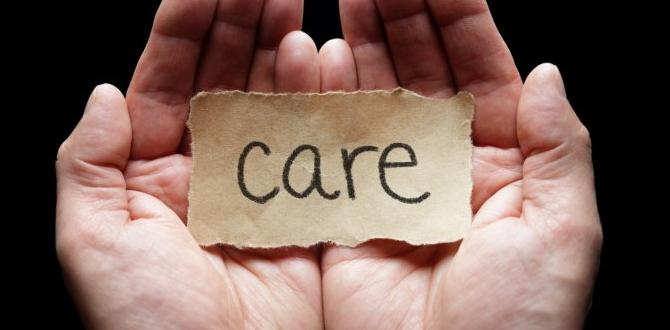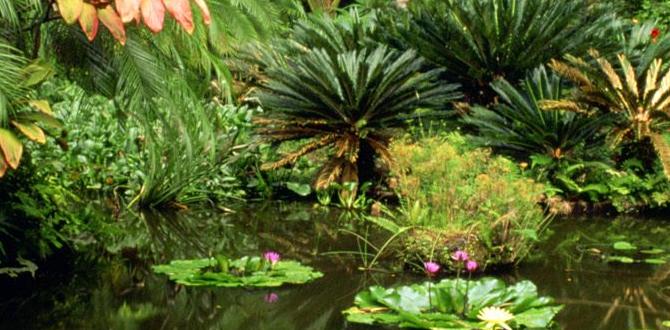Indoor Activities For Easter: Genius, Essential Fun
Transform your Easter celebration with easy, creative indoor activities perfect for any family. From egg hunts to craft projects, discover delightful ways to enjoy the holiday indoors, making memories that last.
Easter is a time for joy, family, and a bit of springtime magic. But what happens when the weather doesn’t cooperate, or you’re looking for ways to keep the little ones (and the grown-ups!) entertained around the house? Celebrating indoors doesn’t mean missing out on the fun. In fact, it opens up a whole new world of creative possibilities! We’ll explore some genius ideas that are essential for a memorable Easter, no matter the forecast. Get ready to dive into a basket full of delightful indoor fun that everyone can enjoy.
Planning Your Easter Indoors: The Foundation of Fun
When planning indoor Easter activities, the key is a blend of anticipation, creativity, and engagement. Think about what makes Easter special for your family – is it the hunt for eggs, the delicious treats, or the chance to create something beautiful? By focusing on a few core elements, you can build a fantastic day of fun right in your home.
Start by setting a theme, even a simple one. It could be “Spring Garden Party,” “Bunny Burrow Adventure,” or “Chicks and Chocolate.” This theme can guide your decorations, activities, and even your snacks, making the day feel cohesive and extra special. Remember, simplicity is often the most effective. You don’t need elaborate setups; just a little intention goes a long way.
Consider the age range of your participants. What’s engaging for toddlers might be too simple for older children, and vice versa. Offering a mix of activities that cater to different ages ensures everyone feels included and excited. It’s about creating a shared experience that fosters connection and brings smiles all around.
The All-Important Easter Egg Hunt: Indoors Edition
The Easter egg hunt is a tradition many families cherish, and it’s perfectly adaptable for indoor settings. Forget the sprawling lawns; your cozy living room, hallway, or even a decorated bedroom can become the perfect hunting ground. The goal is to create a sense of adventure without letting the search become too overwhelming or frustrating. Here’s how to make your indoor egg hunt a smashing success:
Types of Indoor Egg Hunts
There are several fun variations you can try:
- The Classic Hide-and-Seek Hunt: This is the most straightforward. Eggs are hidden in various locations around a designated area. You can make it easier for younger children by hiding them in plain sight or at lower levels, and more challenging for older kids by tucking them away in trickier spots.
- The Scavenger Hunt with Clues: For an extra layer of excitement, create a scavenger hunt! Instead of just finding eggs, participants find clues that lead them to the next location or the next egg. Clues can be riddles, picture prompts for non-readers, or simple directional instructions.
- The Color-Coded Hunt: Assign different colored eggs to different age groups or assign specific colors for individuals to find. This helps manage the chaos and ensures everyone has a fair chance to gather some treasures. You can even have a “most of one color” competition.
- The Puzzle Hunt: Hide pieces of a simple Easter-themed puzzle, or even a larger picture that reveals a celebratory message. Once all the pieces are found, the family works together to assemble it.
- The Glow-in-the-Dark Hunt: If your Easter celebration extends into the evening, turn off the lights and use glow-in-the-dark painted or filled eggs for a magical hunt. Blacklights can enhance the eerie glow!
Setting Up Your Indoor Egg Hunt
Before the hunt begins, consider these setup tips:
- Designate a Hunting Zone: Clearly inform everyone which rooms or areas are “in play” for the hunt. This prevents eggs from ending up in unexpected places like the oven or the dog’s bed!
- Vary the Hiding Spots: Use furniture, shelves, behind curtains, inside decorative baskets, or even tucked into large potted plants (if they are sturdy!). Avoid truly dangerous or inaccessible spots.
- Consider Container Size: If you’re using baskets or buckets for collecting, ensure they are an appropriate size for your hunters to carry easily.
- Pre-Test Hiding Spots: Walk through the hunt area yourself to ensure eggs are visible enough for the intended age group but still offer a challenge.
- Safety First: Ensure all hiding spots are safe and accessible. Avoid anything that could cause a fall or injury. Also, be mindful of small children with any small candy or toy fillings.
What to Fill Your Eggs With (Beyond Candy!)
While candy is a classic, you can get creative with your egg fillers for added fun and less sugar:
- Small, eco-friendly toys (miniature animals, bouncy balls, temporary tattoos)
- Stickers and craft supplies (gems, googly eyes, small pieces of paper for drawing)
- Educational items (tiny word flashcards, simple math problems)
- Assortment of seeds for planting (more on this later!)
- Small, wrapped snacks or fruit pieces
- Coupons for future activities (e.g., “One extra bedtime story,” “Choose dinner tonight”)
- Building blocks or Lego pieces (hide a few pieces of a larger build)
Easter Crafts That Bloom Indoors
Easter crafts are a wonderful way to engage creativity and produce charming decorations. They also serve as fantastic activities that produce tangible results, giving a sense of accomplishment. Think about crafts that incorporate natural elements or celebrate the theme of new beginnings, fitting for the spring season.
DIY Easter Decorations
Let’s get crafty! Here are some ideas to spruce up your home:
- Salt Dough Ornaments: Mix 2 cups flour, 1 cup salt, and 3/4 cup water. Knead until smooth, roll out, and cut shapes with cookie cutters. Poke a hole for hanging. Bake at 250°F (120°C) for 2-3 hours until hard, then paint and decorate.
- Paper Plate Easter Bonnets or Hats: Provide paper plates, construction paper, ribbons, Easter stickers, and glue. Kids can design and decorate their own festive headwear. A great prop for photos!
- Egg Carton Critters: Transform egg carton cups into bunnies, chicks, or caterpillars. Paint them, add googly eyes, pipe cleaners for antennae, and cotton balls for fluff.
- Decorate Easter Eggs (the Artful Way): Beyond the dyeing kit, try marbled paint eggs (dip in shaving cream mixed with food coloring), sticker-resist eggs, or even use permanent markers to draw intricate patterns.
- Spring Garland: Cut out shapes like eggs, bunnies, or flowers from colored paper or felt. Hole punch them and thread onto yarn or twine with a needle to create a festive garland. Even old newspaper can be repurposed into colorful cut-out shapes!
Nature-Inspired Crafts for Easter
Embrace the “spring” in springtime with these nature-themed crafts. Remember to collect natural items responsibly and ethically. For an eco-friendly approach, encourage gathering fallen leaves, twigs, and pebbles from your garden or local park.
- Leaf Rubbings: Place leaves under a piece of paper and rub with the side of a crayon. The texture and shape of the leaves will appear! This is a great way to learn about different plant species found around your home. Try an online leaf identification guide if you’re curious.
- Twig Crafts: Collect twigs of various sizes. Kids can glue them onto cardstock to create tree branch art, form them into the shape of a bunny or an Easter cross, or use them as frames for small pictures.
- Pebble Painting: Gather smooth, flat pebbles. Wash and dry them, then paint them with acrylics to look like tiny Easter eggs, ladybugs, or other spring creatures.
- Floral Collages: Use pressed flowers and leaves (you can press them yourself in heavy books for a week or two) to create beautiful, intricate collages on cardstock.
Easter Baking and Cooking Fun
Easter is synonymous with delicious food, and the kitchen can become a hub of activity. Baking and cooking together is not only fun but also a wonderful way to teach practical skills and share traditions.
Bake Your Own Easter Treats
Here are some beginner-friendly recipes that are sure to be a hit:
- Bunny-Shaped Sugar Cookies: Use a bunny cookie cutter. Decorate with pastel icing, sprinkles, and edible glitter. Let the dough chill well for easy cutting and less spreading.
- “Carrot” Cake Cupcakes: Simple vanilla or spice cupcakes dyed orange and topped with green buttercream “leaves” make adorable edible carrots.
- No-Bake Nests: Combine melted chocolate or peanut butter with chow mein noodles or crushed cereal (like cornflakes or Cheerios). Form into bird nests and place candy eggs in the center.
- Fruity Easter Parfaits: Layer yogurt, granola, and fresh berries (like strawberries and blueberries) in clear glasses. Top with a mint leaf or a small cookie cutout for a festive touch.
Design Your Own Easter Cake or Cupcakes
Bake a simple cake or a batch of cupcakes and let the decorating be the main event. Provide an assortment of:
- Pastel-colored frostings
- Sprinkles and edible glitter
- Small candy eggs and jellybeans
- Edible flowers
- Cookie cutters for shaping fondant or cookie dough toppers
- Piping bags with various tips for frosting designs
Let each family member decorate their own cupcake or contribute to a larger family cake. It’s a fantastic way to encourage artistic expression and enjoy the fruits (or frosting!) of their labor.
An Eco-Friendly Easter Menu Tip
Consider incorporating some “grow-your-own” elements into your Easter feast. If you started an indoor herb garden, use fresh chives for garnish, mint for a refreshing drink, or parsley in your favorite dishes. Even simple sprouts, like alfalfa or radish sprouts, can add a lovely fresh crunch to salads or sandwiches, demonstrating the bounty of your indoor gardening efforts.
Games and Activities for All Ages
Beyond hunts and crafts, a variety of games can keep the energy levels up and create lasting memories. Aim for activities that encourage interaction and a bit of healthy competition.
Easter-Themed Party Games
- Jelly Bean Guessing Jar: Fill a large jar with jelly beans and have everyone guess how many are inside. The closest guess wins the jar!
- Easter Bingo: Create bingo cards with Easter symbols (eggs, bunnies, chicks, lilies, baskets). Call out the symbols, and the first to get a line wins a small prize.
- “Pin the Tail on the Bunny”: A classic refashioned for Easter. Draw or print a large bunny outline and have participants try to pin a paper tail in the right spot while blindfolded.
- Easter Charades or Pictionary: Write down Easter-related words or phrases on slips of paper (e.g., “hopping bunny,” “dyeing eggs,” “chocolate egg,” “spring shower”). Act them out or draw them.
- Musical Easter Baskets: Similar to musical chairs, place Easter-themed items (or small toy eggs) on the floor. Play music; when it stops, everyone grabs an item. One item is removed each round until one person is left holding a prize.
- Easter Egg Roll Race: Using spoons, participants carefully roll large plastic eggs (or even hard-boiled eggs if you’re brave!) down a designated path. First to finish wins. You can also use straws to blow the eggs along the floor.
Movie Time with an Easter Twist
Transform your living room into a cozy cinema. Choose a few family-friendly Easter or spring-themed movies. Prepare popcorn, set up comfy seating with blankets and pillows, and dim the lights for a relaxed afternoon or evening. You could even turn it into a drive-in movie experience with cardboard box “cars” for younger children.
Storytelling and Performance
Encourage imaginative play by having children write and perform their own short Easter plays or puppet shows. Old socks can become puppets, and a blanket draped over chairs can create a stage. They can invent stories about the Easter bunny, talking chicks, or blooming flowers. This activity fosters creativity, language skills, and confidence.
Introducing a Little Greenery: Indoor Gardening Easter Edition
As a gardener at heart, I believe there’s no better time than spring to introduce a bit of green into our lives, even indoors. Easter celebrations can be wonderfully enhanced by incorporating simple, achievable indoor gardening projects. These activities are not only fun and educational but also connect us to nature’s cyclical renewal.
Planting Seeds in Easter Eggs
This is a truly genius and eco-friendly way to combine Easter traditions with a love for growing. You can use the plastic Easter eggs you might have collected from the hunt, or even hollowed-out real eggs (carefully cracked at the top and emptied).
Materials Needed:
- Plastic or hollowed-out real Easter eggs
- Potting soil (a lightweight, seed-starting mix is ideal)
- Small-seeded plants like cress, radishes, lettuce, or herbs (basil, parsley)
- Small spray bottle for watering
- Optional: A small tray or egg carton to hold your planted eggs
Steps:
- Prepare the Eggs: If using plastic eggs, ensure they have a small drainage hole poked in the bottom. You can gently push a heated needle or a small drill bit through the plastic. For real eggs, carefully rinse and dry the hollowed shells.
- Add Soil: Fill the bottom half of each egg (or the plastic egg) with about an inch of potting soil.
- Sow the Seeds: Follow the seed packet instructions for depth and spacing. For small seeds, a good rule of thumb is to plant them twice as deep as they are wide. Gently press the seeds into the soil.
- Water Gently: Use the spray bottle to lightly mist the soil. You want it to be moist but not waterlogged.
- Provide Light: Place the planted eggs in a sunny windowsill. Many spring seeds, like cress and radishes, germinate quickly and don’t require intense light initially.
- Watch Them Grow: You should see sprouts within a few days to a week, depending on the seed type.
This project is perfect for teaching children about germination and plant growth. The “harvest” can be as simple as snipping some cress for a sandwich or watching the radishes mature.
Growing Your Own Easter Grass
Forget the plastic grass filler! You can grow your own edible and natural Easter grass using wheatgrass or cress seeds. These grow rapidly and create a beautiful, green bed for your Easter eggs.
Materials Needed:
- A shallow tray or container
- Potting soil or seed-starting mix
- Wheatgrass or cress seeds (available at most garden centers or online)
- Watering can or spray bottle
- A sunny spot
Steps:
- Fill the Tray: Spread about 1-2 inches of potting soil evenly in your tray.
- Sow Seeds Generously: Sprinkle the seeds thickly over the soil. The denser they are, the more like “grass” it will look.
- Water Gently: Moisten the soil thoroughly but avoid overwatering.
- Cover Briefly: You can cover the tray with a piece of cardboard or another tray for the first few days to retain moisture and encourage germination. Keep in a warm spot.
- Uncover and Grow: Once sprouts appear (usually within 2-5 days),




